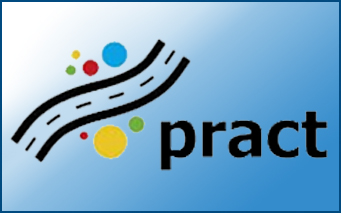
The Australia and New Zealand Driverless Vehicle Initiative (ADVI), led by the Australian Road Research Board (ARRB), released the Preliminary findings from the first Australian National Survey of Public Opinion about Automated and Driverless Vehicles. In late 2016, a sub-set of members of ADVI’s Scientific Research Group designed and conducted a public opinion survey to gauge Australian public awareness, understanding and likely acceptance of automated vehicles, with the primary focus on cars. Responses from 5263 participants were collected and analysed in relation to their level of awareness of automated vehicles generally, and their opinions specifically about partly- and fully-automated cars: perceived risks associated with them, their willingness to pay for them, perceived potential benefits, trust in them, perceived concerns and likely acceptance. ![]()

SafeFITS, the Global Road Safety Model developed by NTUA for the United Nations – Economic Commission for Europe (UNECE) with the support of the International Road Transport Union (IRU) has been presented and discussed at the respective RoundTable in Geneva, on June 30th, 2017. SafeFITS Model is a global macroscopic road safety decision making tool aiming to assist governments and decision makers, both in developed and developing countries, to explore and choose the most appropriate road safety policies and measures in order to achieve tangible results. The SafeFITS Model is based on the related scientific knowledge available worldwide, with emphasis on recent academic research and project results. ![]()
NTUA Professor George Yannis presentation concerned:
![]() SafeFITS – A Global Road Safety Model For Future Inland Transport Systems
SafeFITS – A Global Road Safety Model For Future Inland Transport Systems

The International Transport Forum (ITF) together with IRU, ITWF and ACEA launched a report titled: “Managing the Transition to Driverless Road Freight Transport”. This report considers how a transition to driverless road freight transport could happen. Today’s technology already makes it possible to operate automated trucks. Reduced reliance on humans to move road freight in the future could offer large cost savings for businesses and consumers. It could also disrupt the careers and lives of millions of professional truck drivers. Based on different scenarios for the large-scale introduction of automated road freight transport, this study makes recommendations to assist governments manage potential disruption and ensure a just transition for affected drivers. ![]()
![]()

The Department of Transportation Planning and Engineering of the Civil Engineering School of the National Technical University of Athens was ranked 9th in Europe and 39th worldwide among all Transportation Science & Technology Schools ![]() and the Civil Engineering School of the National Technical University of Athens was ranked 7th worldwide (3rd European) among all Civil Engineering Schools
and the Civil Engineering School of the National Technical University of Athens was ranked 7th worldwide (3rd European) among all Civil Engineering Schools ![]() according to ShanghaiRanking’s Global Ranking of Academic Subjects (GRAS) 2017
according to ShanghaiRanking’s Global Ranking of Academic Subjects (GRAS) 2017 ![]() . The methodology of the ShanghaiRanking’s Global Ranking include specific thresholds, indicators and weights.
. The methodology of the ShanghaiRanking’s Global Ranking include specific thresholds, indicators and weights. ![]()
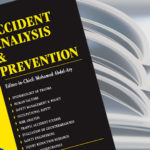
A paper titled “Mild Cognitive Impairment and driving: Does in-vehicle distraction affect driving performance?” authored by Ion N. Beratis, Dimosthenis Pavlou, Eleonora Papadimitriou, Dionysia Kontaxopoulou, Stella Fragkiadaki, George Yannis, and Sokratis G. Papageorgiou, is now published in Accident Analysis and Prevention. In-vehicle distraction is considered to be an important cause of road accidents. Drivers with Mild Cognitive Impairment (MCI), because of their attenuated cognitive resources, may be vulnerable to the effects of distraction; however, previous relevant research is lacking. The main objective of the current study was to explore the effect of in-vehicle distraction on the driving performance of MCI patients, by assessing their reaction time at unexpected incidents and accident probability, through a driving simulator experiment. Overall, the current findings indicate, for the first time, that a common driving practice, such as the use of mobile phone, may have a detrimental impact on the driving performance of individuals with MCI. ![]()
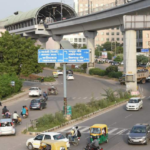
WHO Injury Prevention and Safety Promotion Collaborating Centre in India, released two reports on road safety prepared by Underwriters Laboratories (UL) and National Institute of Mental Health and Neuro Sciences (NIMHANS):
1. “Advancing Road Safety in India: Implementation is the key”, which is a report providing a comprehensive review of road safety scenario in India from a public health perspective ![]()
2. “Advancing Road Safety in India: Facts and Figures”, which is a report based on available information from different sources in India provides facts and figures aimed at equipping diverse stakeholders in taking appropriate actions ![]()
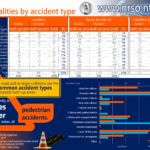
According to ELSTAT final road accidents data for 2015, come off the road and at angle collisions are the two most common accident types outside built-up areas. Pedestrian accidents, at angle collisions, come off the road and collisions with stopped vehicle are the most common accident types inside built-up areas. Accident severity is more than 5 times higher outside built-up areas at pedestrian accidents. ![]()

The 12th ITS European Congress took place with great success from 19 to 22 June 2017 at the Strasbourg Convention Centre. Under the theme “ITS Beyond Borders”, the Congress focused on the people, intelligent mobility users, as every day hundreds of thousands of them are crossing the French-German border to live their daily lives. During the Congress, the City and Eurometropolis of Strasbourg and ERTICO – ITS Europe hosted the second edition of the Mayors’ Summit. City mayors and leaders from Europe gathered again to explore opportunities, experiences and strategies related to present and future contributions of ITS to seamless travel and sustainable, efficient and innovative mobility. The 12th European ITS Congress 2017 was organised by ERTICO – ITS Europe in partnership with the European Commission and hosted by the City and Eurometropolis of Strasbourg. ![]()
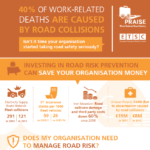
The European Transport Safety Council (ETSC) has just published the 33th PIN Flash Report “Tapping the potential for reducing work-related road deaths and injuries“, with the active contribution of NTUA. Over 25,600 lives were lost on the road in the European Union in 2016, of those a large proportion were victims of work-related road (WRR) collisions. Even though the exact number is unknown, it is likely that up to 40% of all road deaths are work-related. It includes three parts: Part I: Work-related road safety (WRRS) data collection and reporting, Part II: The national legal framework for work-related road safety, and Part III: Public authority leadership in managing work-related road risks. ![]()
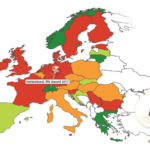
The European Transport Safety Council (ETSC) has published the PIN Annual Report at the eleventh edition of PIN Annual Conference on 20 June 2017, in Brussels. Since 2014, progress has virtually ground to a halt. 2016 was the third consecutive poor year for road safety: 25,670 people lost their lives on EU roads compared to 26,200 the previous year – a 2% decrease. But this followed a 1% increase in 2015 and stagnation in 2014. Out of the 32 countries monitored by the PIN Programme, 15 countries registered a drop in the number of road deaths last year. NTUA contributed actively to this ETSC PIN Annual Report. ![]()
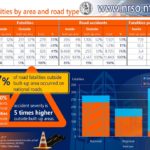
According to the Hellenic Statistical Authority ELSTAT data, among the 793 persons killed in Greece in 2015: 405 were outside built-up areas and 388 were inside built-up areas. 57% of road fatalities outside built-up area occurred on national roads. More than 80% of road accidents and half of fatalities occurred inside built-up areas. However, accident severity is almost 5 times higher outside built-up areas in total. ![]()

The 2017 PIN Conference took place with great success in Brussels on 20 June, organised by the European Transport Safety Council (ETSC). The EU has set a target to halve road deaths by 2020. Which countries are on track, and which are playing catch-up? At the 2017 PIN conference, ETSC launched its latest Road Safety Performance Index (PIN) annual report looking at why some countries are still making progress on road safety and some are going in reverse. Two areas were highlighted where action is needed to ensure future progress: work-related road safety and reducing deaths in single-vehicle collisions. The event also saw the unveiling of this year’s PIN Award winner, presented to Switzerland for outstanding progress on road safety. ![]()

The International Journal of Driving Science (IJDS) organised the 1st IJDS symposium in Haarlem, The Netherlands, which took place on 14-15 June 2017. In this symposium, intelligent vehicle technologies integrated with human factors in applied research. Here, researchers and engineers from academia, industry and government meet and present their latest findings and state-of-the-art technology. ![]()
![]()

The Private Sector Global Coalition Together for Safer Roads (TSR) composed by 16 leading global companies has organised on June 19th, 2017, in Atlanta, USA a Round Table Discussion on New Trends and Opportunities in Road Safety. This Round Table Discussion demonstrated the high potential of technology and new trends for safety improvement as well as the role of the Member Companies to promote and exploit this potential. NTUA Professor George Yannis presentation concerned:

A paper titled “Time series and support vector machines to predict Powered-Two-Wheeler accident involvement and accident type” co-authored by Athanasios Theofilatos, George Yannis, Costas Antoniou, Antonis Chaziris and Dimitris Sermpis, is now published in Journal of Transportation Safety and Security. This study exploited real-time traffic and weather data from two major urban arterials in the city of Athens, Greece. Due to the high number of candidate variables, a random forest model was applied to reveal the most important variables. Then, the potentially significant variables were used as input to a Bayesian logistic regression model in order to reveal the magnitude of their effect on PTW accident involvement. The results of the analysis suggest that PTWs are more likely to be involved in multi-vehicle accidents than in single-vehicle accidents. It was also indicated that increased traffic flow and variations in speed have a significant influence on PTW accident involvement. ![]()
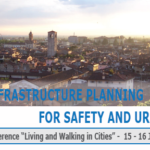
The Living and Walking in Cities Conference, organised by the Department of Civil, Environmental, Architectural Engineering and Mathematics of Universita Degli Studi di Brescia, now in its 23rd edition, was held with great success in Brescia, on 15-16 June 2017. This Conference traditionally looks at different themes concerning the quality of life in urban areas and the goal of this event is to gather researchers, road users, administrators, technicians, city representatives and experts aiming to discuss problems that affect the safety of pedestrians in the city, especially of children and persons with reduced mobility. The conference covers international issues, national and local policies and the implementation of projects at the local level. ![]()
![]()
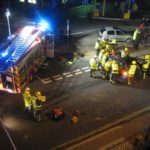
The Council of the European Union set a new target of halving the number of serious injuries on roads in the EU by 2030 from the 2020 baseline, using a recently agreed common definition. Of particular concern is the number of pedestrians and cyclists killed or seriously injured each year. Council conclusions on road safety endorse the Valletta declaration on improving road safety adopted at an informal ministerial meeting organised by the presidency on 29 March 2017. They will feed into the next EU strategy on road safety, which is expected to be developed for the decade 2020-2030. ![]()
![]()
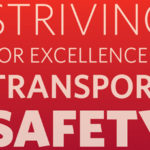
The Vision Zero Conference organised by the Swedish Ministry of Enterprise and Innovation, Trafikverket (Swedish Transport Administration) and Transportstyrelsen (the Swedish Transport Agency) and took place in Stockholm on 14-15 June 2017. How do we reach Vision Zero in the light of UN’s Sustainable Development Goals? The aim of the Vision Zero Conference was to provide new impetus to the promotion of road transport safety at the strategic level. The main focus was on best practice, innovation and future challenges. The Vision Zero Conference’s different sessions:
- Vision Zero around the world/UN’s Sustainable Development Goals
- 20 years with Vision Zero
- Livable Cities
- New Technology and Innovation
- Role of Humans and Organisation from a Vision Zero perspective
Policy makers, road safety practitioners, together with high-level representatives from industry and international academia shared their experiences, aim to find common goals and discuss the way forward. ![]()
![]()

The Road Safety Institute Panos Mylonas and the European Transport Safety Council (ETSC) organised with great success a country seminar in Athens on 12 June 2017, within the framework of the ETSC YEARS project (Young Europeans Acting for Road Safety). The aim was to debate on the dangers and policy recommendations for young road users on European and national level. Representatives from the Greek Authorities, road safety experts and stakeholders as well as the European Commission representation in Athens discussed and contributed on good practices in Greece and in Europe. ![]()
![]()
![]() NTUA presentation concerned:
NTUA presentation concerned:
![]() Problems and solutions for youth’s road safety in Greece and Europe
Problems and solutions for youth’s road safety in Greece and Europe
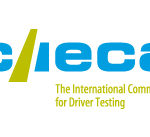
The 49th CIECA General Assembly and Congress took place in Trondheim, Norway, on 8-9 June 2017. With the Congress, entitled “Well-educated driving instructors and examiners: a pre-requisite for responsible drivers”, CIECA focused on the current efforts in the field to affirm that the quality of the education of driving examiners and driving instructors, has a decisive impact in the process of developing future responsible drivers. ![]()

The 6th International Naturalistic Driving Research Symposium and the UDRIVE Final Event organized by SWOV, Virginia Tech and UDRIVE took place with great success in Hague, Netherlands, on 7-9 June 2017. The 6th International Naturalistic Driving Research Symposium provided with a thorough overview of international naturalistic driving and riding studies and insight into the next generation of this type of studies. In 2017, the symposium was organized in conjunction with the EC FP7 UDRIVE research project, where the results of this European Naturalistic Driving study were presented. ![]()
NTUA presentations concerned:
![]()
![]() Naturalistic Aerial Approaches for Monitoring Powered Two Wheelers
Naturalistic Aerial Approaches for Monitoring Powered Two Wheelers
![]()
![]() Monitoring distraction through smartphone naturalistic driving experiment
Monitoring distraction through smartphone naturalistic driving experiment
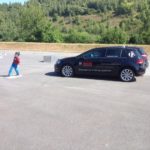
A coalition of Industry, NGOs, Consumer Groups and Cities are calling on the European Commission to urgently bring forward new minimum safety standards for new cars, vans and trucks, waited since long. The European Association of Automotive Suppliers (CLEPA), the European Cyclists Federation (ECF), POLIS, the European Transport Safety Council (ETSC) and Transport & Environment (T&E) released a letter suggesting that new minimum vehicle safety standards are ‘absolutely critical’ to reducing deaths and serious injuries on European roads. ![]()

The Laboratory of Health and Road Safety of the TEI of Crete (LaHeRS) organised with great success a Workshop titled: “Promoting Road Safety Culture” in Heraklion, Crete, Greece on 29 May. Several presentations covered a large spectrum of promoting road safety culture such as research, interventions, promotion programs, targeted actions and good practices. The main conclusion of the Workshop is the need to adopt an holistic approach and to promote interdisciplinary cooperation in promoting road safety. ![]()
![]() NTUA presentations concerned:
NTUA presentations concerned:
![]() Road accidents characteristics and countermeasures
Road accidents characteristics and countermeasures
![]() The SafeCulture project – Results on safety culture in professional transport in Greece
The SafeCulture project – Results on safety culture in professional transport in Greece

The 50th CIECA General Assembly and Congress took place with great success on 29 May – 01 June 2018, in Belfast, Northern Ireland. The General Assembly and Congress was hosted by the Driver & Vehicle Agency. This year’s theme was “Safe driving for life: changing attitude and behaviour through education, training and testing” ![]()
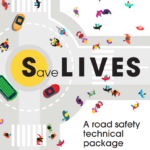
World Health Organisation (WHO) released a a road safety technical package entitled: Save LIVES, which is an evidence-based inventory of priority interventions with a focus on Speed management, Leadership, Infrastructure design and improvement, Vehicle safety standards, Enforcement of traffic laws and post-crash Survival. The 6 strategies and 22 interventions recommended in the package are interrelated and should be implemented in an integrated manner to effectively address road traffic deaths and injuries. ![]()

The Hellenic Association of Driving Instructors organised with great success the 1st International Interdisciplinary Conference on Road Safety and Children in Thessaloniki on 19-21 May 2017. Several results from road accident data analysis and methodologies and modern technologies related to road safety with focus to children were presented. ![]()
![]() NTUA presentations concerned:
NTUA presentations concerned:
![]() Road accidents involving children in Europe and in Greece
Road accidents involving children in Europe and in Greece
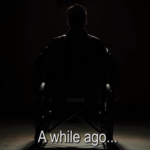
The Road Safety Institute ‘Panos Mylonas’ with the support of the Federation Internationale de l’Automobile (FIA) produced and implemented a video campaign titled “a while ago…” within the Fourth UN Global Road Safety Week, focusing on speed, identified worldwide as a major risk factor of death and disability. ![]()
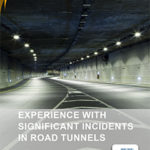
The World Road Association (PIARC) has recently published a report entitled: “Experience with Significant Incidents in Road Tunnels”. Approximately ten to fifteen years ago many countries introduced tunnel safety management systems and started paying attention to tunnel safety in a more structured way. Experience with tunnel incidents and methods for incident evaluation and risk analysis have led to developments in organisation and management and to improvements in the systems in use. In this report several contributing countries share information on lessons learned from incidents and developments in safety management and risk analysis and conclusions are drawn on topics of general interest. ![]()
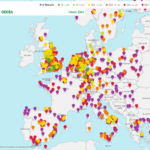
DEKRA has updated its online tool to track the status of “Vision Zero”, a multinational road traffic safety project demonstrating that hundreds of towns and cities with more than 50,000 inhabitants achieved the target of zero deaths caused by road accidents in at least a single year. 16 of these towns and cities did not see a single death caused by road accidents in the entire period. Overall, the figures show that, far from being an illusion, “vision zero” is attainable in urban habitats and already a reality in many towns and cities. This highlights the need to step up efforts to learn from successful towns and cities, to further improve road safety and get ever closer to achieving the vision – including with regard to serious injuries. ![]()
![]()
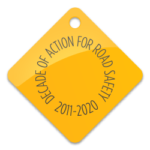
The International Road Federation (IRF Geneva) supporting global action aiming at halving the number of road death and injuries from road crashes by 2020 released a new knowledge repository on road safety. The Global Transport Knowledge Practice (gTKP) hosts work produced by Project Group 1 and Project Group 2 of the United Nations Road Safety Collaboration Group (UNRSC). The release is being made possible by work of many of the members of the UNRSC and support from the World Bank hosted Global Road Safety Facility (GRSF) and from RoadSafe UK. ![]()


















































































